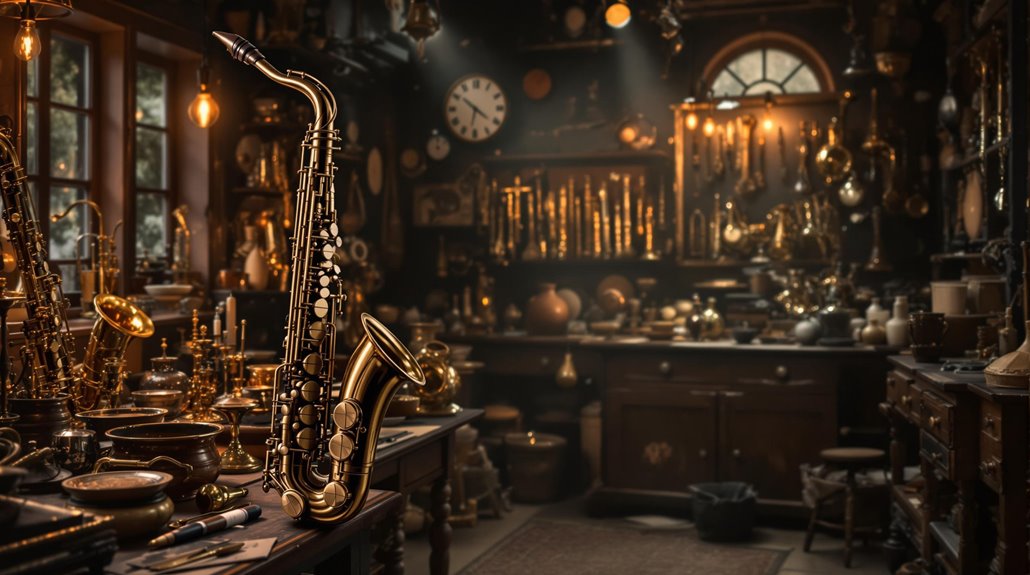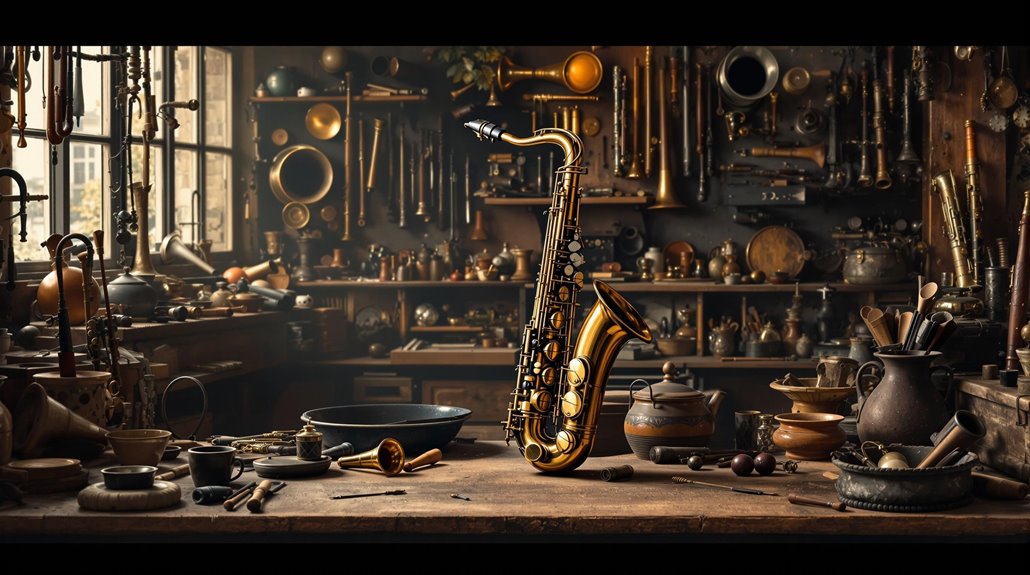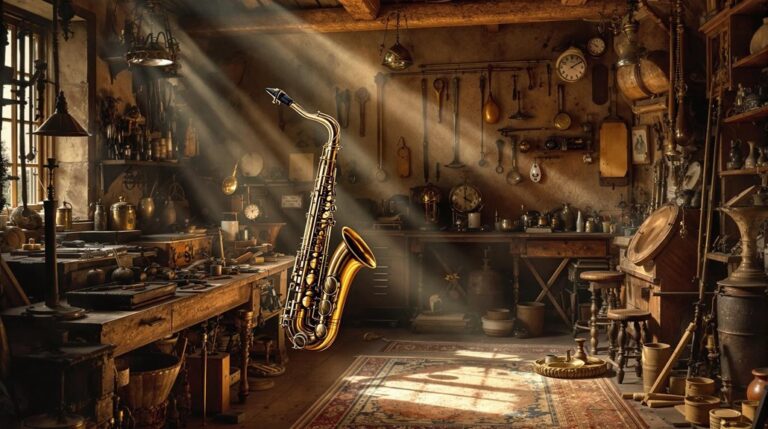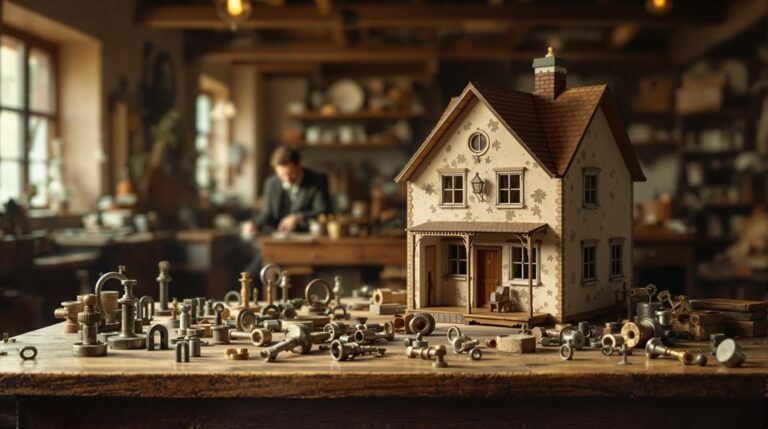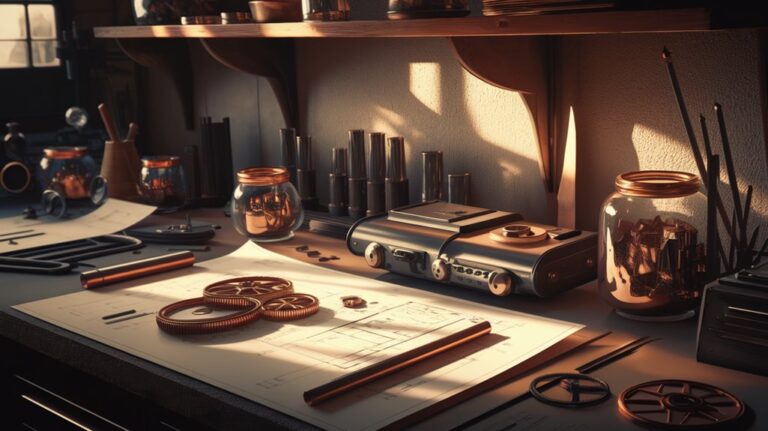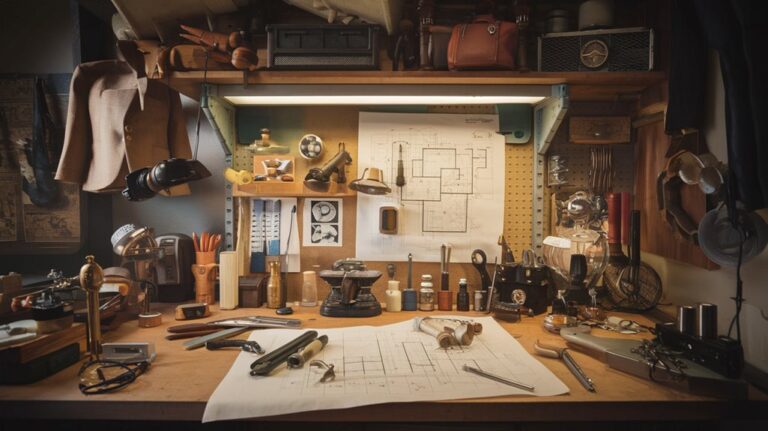Adolphe Sax: The Calamity-Filled Path to a Musical Masterpiece
Have you ever wondered how near-death experiences might shape someone's creative destiny? Adolphe Sax's path to inventing one of music's most beloved instruments wasn't just challenging—it was downright perilous. From drinking acid to falling down stairs to nearly drowning, young Sax seemed to court disaster at every turn. Yet these brushes with death didn't break him. Instead, they forged the resilience that would help him revolutionize the world of music forever.
The Nine Lives of Young Adolphe
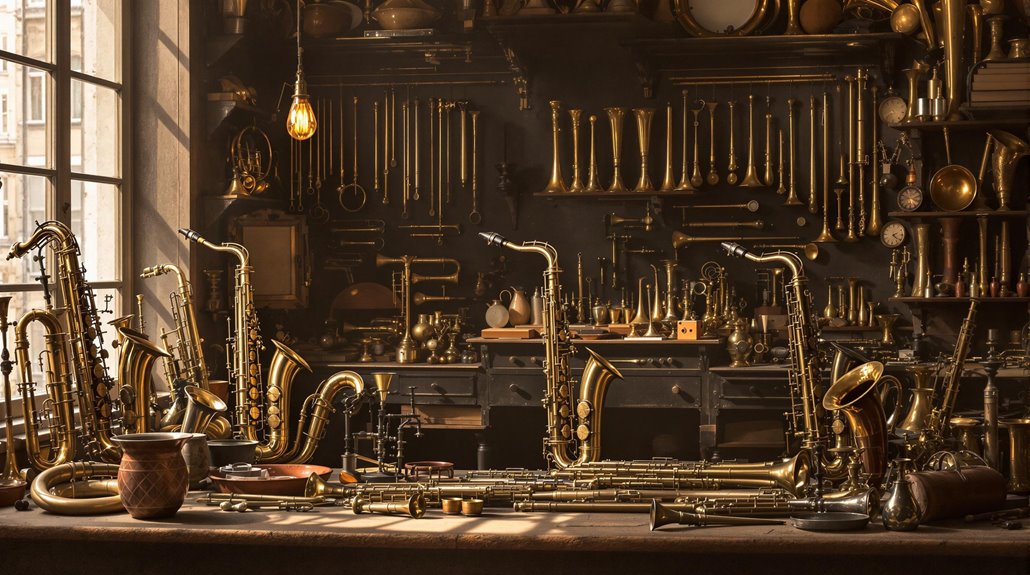
While many people face a few close calls in their lives, Adolphe Sax seemed to have a supernatural ability to escape death. From falling out of a third-floor window to miraculously surviving a gunpowder explosion, young Sax's childhood resilience was truly remarkable.
You'd be amazed to learn he survived drinking acidic water, swallowing a pin, and being struck by a cobblestone – all before his teenage years. Like the diverse religious traditions of South Asia, his experiences were marked by complex dynamics.
As if these incidents weren't enough, Sax's brushes with death continued. He nearly drowned in a river, suffered burns from a hot frying pan, and barely escaped asphyxiation multiple times.
Yet, these harrowing experiences didn't dampen his early creativity. Instead, they seemed to fuel his determination as he worked alongside his parents in their instrument-making workshop, laying the foundation for his future innovations. His father's expertise as a successful joiner and craftsman helped shape young Adolphe's understanding of musical instruments.
From Brussels to Paris: A Musical Journey
After mastering his craft in Brussels' musical scene, Adolphe Sax knew he needed a grander stage for his innovations. His move to Paris in 1842 marked a pivotal cultural exchange between Belgian craftsmanship and French musical influences. During his early career, he had already demonstrated exceptional talent by creating a new bass clarinet system.
His small Parisian workshop quickly became a hub of innovation, catching the attention of influential composer Hector Berlioz. His band gained widespread acclaim when it faced off against a traditional military band in a competition that drew 20,000 attendees.
Despite facing fierce resistance from competitors, Sax's determination proved unstoppable. You can trace his rise through strategic victories: a groundbreaking saxophone debut at the 1844 Paris Industrial Exhibition, a triumphant musical duel that secured a military contract, and the historic saxophone patent of 1846.
His impact was undeniable – by 1860, he'd sold 20,000 instruments, transforming from a Belgian innovator into a Parisian musical legend.
Birth of the Saxophone: Innovation Meets Controversy
Before the saxophone emerged as a musical icon, Adolphe Sax spent years perfecting his revolutionary design that would bridge the gap between brass and woodwind instruments. His creation combined the projection of brass with woodwind agility, featuring a single-reed mouthpiece and conical brass body that could overblow at the octave.
Drawing from his early experience, Sax developed his skills while improving bass clarinets in his father's workshop. As a youth, he was nicknamed little Sax, the ghost due to his numerous accidents and near-death experiences.
The saxophone design sparked intense musical rivalry. You'd be shocked to learn that a competitor kicked Sax's prototype across a hall at the 1841 Brussels expo.
The Association of United Instrument Makers formed to oppose him, while pirated versions flooded France after his 1846 patent. Despite these challenges, Sax's innovation proved successful – he sold roughly 20,000 saxophones between 1843-1860.
Even composer Berlioz defended him against what he called "persecutions worthy of Middle Ages."
The Price of Genius: Legal Battles and Bankruptcy
Sax's innovative spirit came at a steep personal cost. The United Association of Instrument Makers launched relentless patent disputes, challenging his saxophone design and flooding the market with counterfeits. His workshop mysteriously caught fire, likely sabotaged by rivals seeking to destroy his business. Despite securing a patent in 1846 and winning government contracts, you'll find his path marked by devastating financial setbacks.
Picture the harsh realities Sax faced:
- Filing for bankruptcy three times (1852, 1873, 1877)
- Fleeing to London when his factory closed
- Losing his entire instrument collection
- Dying penniless at age 79
Yet, his resilience shone through. Between bankruptcies, he secured a position as Musical Instrument Maker to Household Troops and taught at the Paris Conservatory. His achievements were recognized when he received the Grand Prix at the 1867 Paris Exposition Universelle.
Even as competitors circled and debts mounted, Sax's creative spirit never wavered, ultimately patenting 46 inventions throughout his career.
Transforming Music: The Saxophone's Enduring Legacy
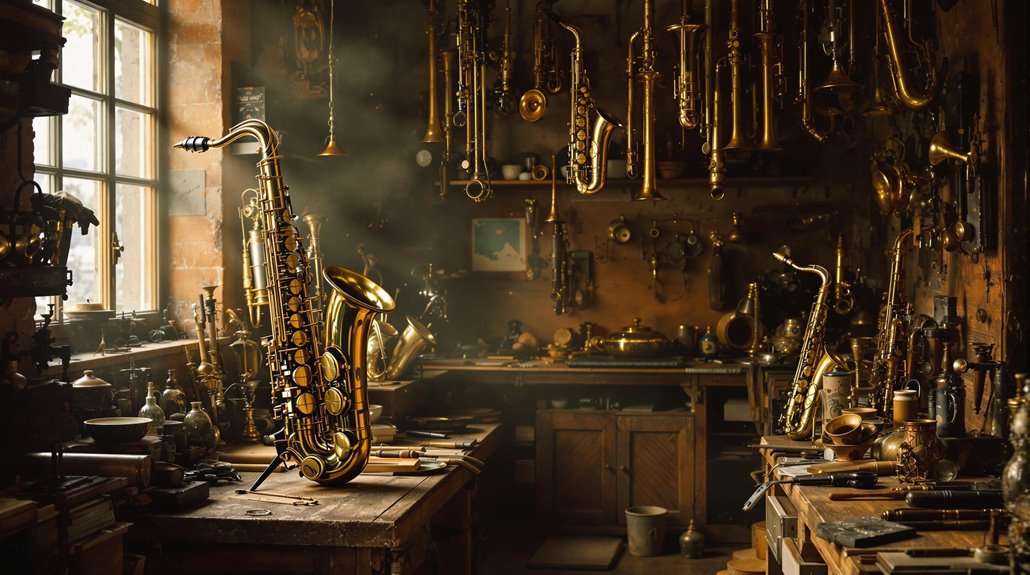
While Adolphe Sax faced personal hardships, his ingenious creation transformed the musical landscape forever.
The saxophone's evolution spans genres, from its revolutionary impact on jazz to its gradual acceptance in classical music. You'll find its influence in Debussy's groundbreaking "Rhapsody" and countless jazz masterpieces by legends like Charlie Parker and John Coltrane. The instrument was originally developed to effectively bridge woodwind and brass instruments in military bands. The masterful design resulted in a complete family of saxophones that ranged from baritone to soprano.
What makes the saxophone particularly special is its capacity for emotional expression, often compared to the human voice. This quality hasn't just shaped jazz – it's left an indelible mark on rock, pop, and contemporary music.
Today's saxophonists continue to push boundaries with extended techniques and digital innovations. From concert halls to recording studios, Sax's invention remains a proof of his vision, bridging classical traditions with modern musical exploration.

